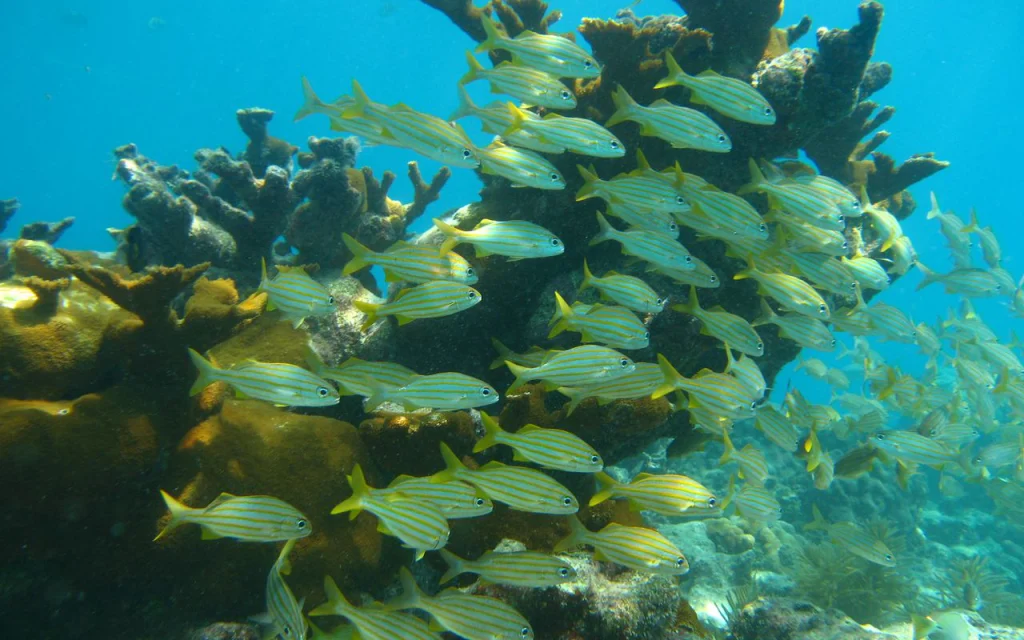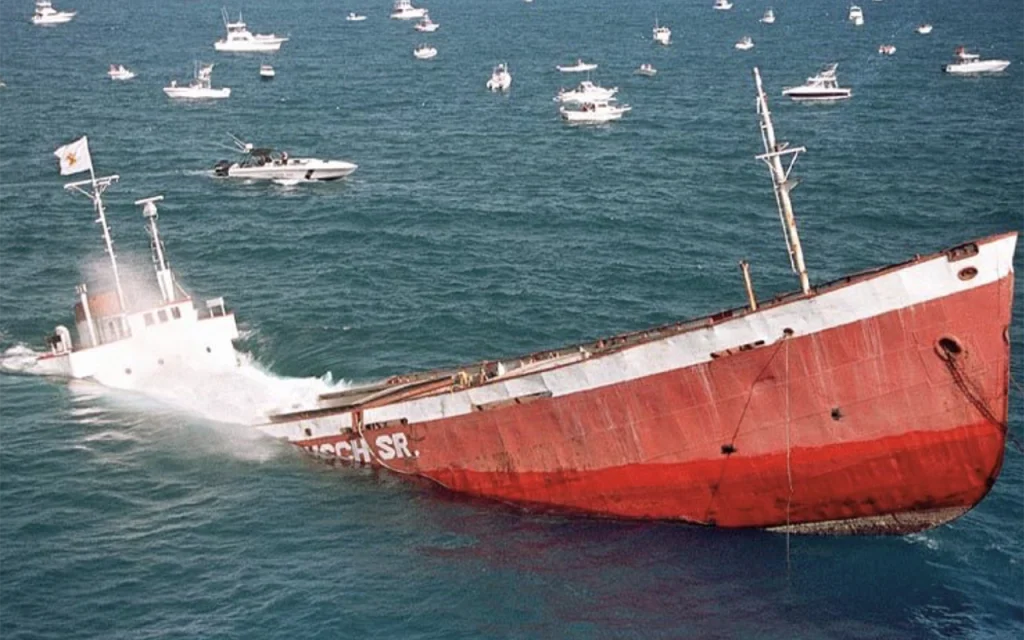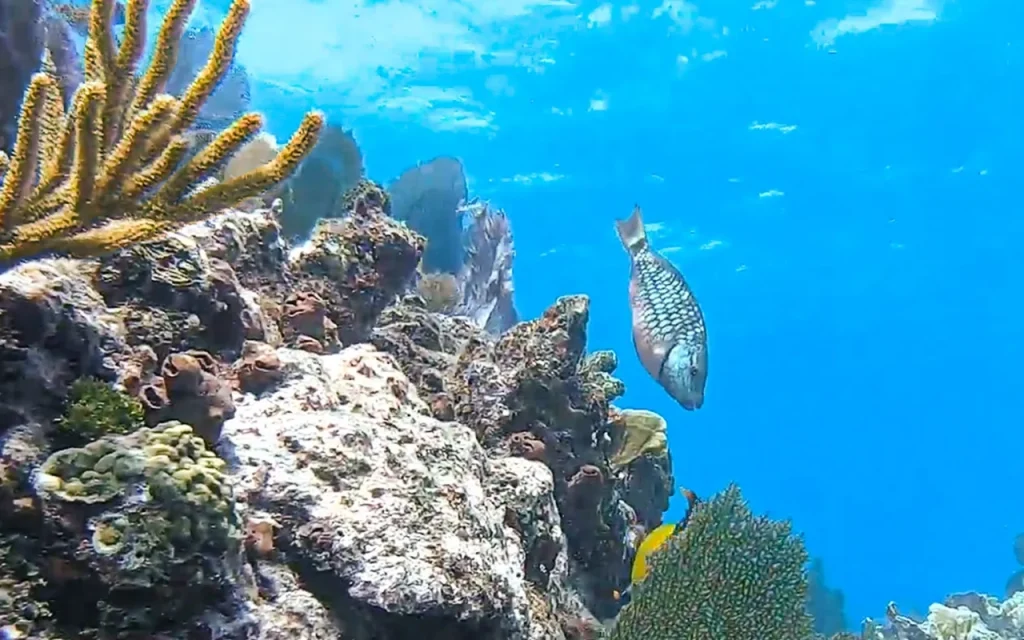
Pensacola: Where History Sleeps Beneath the Gulf’s Blue Horizon
Dive the mighty Oriskany, explore hidden wrecks, and discover deep-sea legends
Pensacola: The Gulf Coast’s Premier Military Wreck Diving Destination
Pensacola stands as the crown jewel of Gulf of Mexico diving, where the world’s largest intentionally sunk artificial reef program has created an underwater museum of military history unmatched anywhere in the world. Known as the “Cradle of Naval Aviation,” this historic Florida Panhandle city has transformed its emerald-green Gulf waters into a diver’s paradise, featuring massive aircraft carriers, destroyers, and other decommissioned military vessels that now serve as thriving artificial reefs teeming with marine life.
The waters off Pensacola showcase the remarkable success of artificial reef development in the Gulf of Mexico, where careful planning and environmental stewardship have created diving opportunities that attract underwater enthusiasts from around the globe. The area’s unique position in the northeastern Gulf provides protection from Atlantic weather systems while maintaining the warm, clear waters that support abundant marine life year-round. The absence of natural coral reefs in this region makes the artificial reef program even more significant, creating critical habitat where none existed before.
Pensacola’s marine life has flourished around the artificial reef structures, creating complex ecosystems that support an incredible diversity of Gulf species. Massive red snappers, some weighing over 20 pounds, patrol the wrecks in large schools, while amberjack, cobia, and king mackerel use the structures as hunting grounds. The area is renowned for its grouper populations, including massive goliath groupers that have claimed territory on the larger wrecks. Colorful tropical fish including angelfish, wrasses, and parrotfish add vibrant colors to the artificial reefs, while sea turtles regularly visit the sites during their migrations.
The crown jewel of Pensacola diving is the USS Oriskany, a massive 911-foot aircraft carrier that was intentionally sunk in 2006 to create the world’s largest artificial reef. Nicknamed the “Great Carrier Reef,” this colossal vessel sits upright in 212 feet of water with its flight deck at 135 feet, making it accessible to advanced recreational divers while offering technical diving opportunities for those with appropriate training. The Oriskany has quickly become a magnet for marine life, hosting resident populations of large fish while serving as a waypoint for pelagic species.
The USS Oriskany offers multiple diving experiences depending on depth and certification level. Recreational divers can explore the massive flight deck, island superstructure, and hangar bay openings, while technical divers can penetrate deeper into the vessel’s interior spaces. The sheer scale of the carrier creates an otherworldly diving experience, where divers feel dwarfed by the massive structure that stretches beyond visibility in all directions.
Beyond the Oriskany, Pensacola’s artificial reef program includes an impressive collection of military vessels that tell the story of American naval history. The USS Strength, a 240-foot Navy tug, sits in 125 feet of water and provides excellent wreck diving for intermediate divers. The LCU 1644, a 134-foot landing craft, offers easier penetration opportunities in 100 feet of water. The Antares, a former research vessel, creates habitat in 100 feet while maintaining its structural integrity for safe exploration.
Pensacola’s diving infrastructure reflects the area’s status as a military wreck diving destination, with specialized dive operators offering technical diving services, military history education, and expert knowledge of the artificial reefs. These professional facilities maintain the highest safety standards while providing advanced training in deep diving, wreck penetration, and mixed-gas diving techniques necessary for exploring the deeper military wrecks safely.
The area’s unique position in the Gulf of Mexico creates favorable diving conditions throughout most of the year. Water temperatures range from 65°F in winter to 85°F in summer, while visibility often exceeds 60 feet and can reach 100+ feet during optimal conditions. The Gulf’s generally calmer conditions compared to Atlantic sites means more diveable days, though summer thunderstorms and occasional tropical weather can affect diving schedules.
Pensacola’s military heritage adds a unique cultural dimension to the diving experience. The National Naval Aviation Museum, located at nearby Naval Air Station Pensacola, provides historical context for the underwater military vessels, while the Blue Angels flight demonstration team calls Pensacola home. This combination of military history above and below the water creates an educational and patriotic diving experience found nowhere else.
The city’s position as a major Gulf Coast destination means excellent amenities for visiting divers. Pensacola Beach offers sugar-white sand beaches and resort accommodations, while downtown Pensacola features historic districts, excellent restaurants, and vibrant nightlife. The area’s proximity to other Gulf Coast destinations also makes it an ideal base for extended diving vacations.
What truly sets Pensacola apart is the concentration of large military wrecks that provide diving experiences impossible to find elsewhere. The scale and historical significance of vessels like the USS Oriskany create emotional and educational diving experiences that combine technical challenge with historical appreciation. The artificial reefs have matured over decades, creating complex ecosystems that demonstrate the positive environmental impact of well-planned artificial reef programs.
Whether you’re a technical diver seeking to explore the depths of the USS Oriskany, a military history enthusiast wanting to dive through naval heritage, or an advanced recreational diver looking for challenging wreck diving experiences, Pensacola offers unparalleled artificial reef diving that continues to attract underwater adventurers from around the world.

